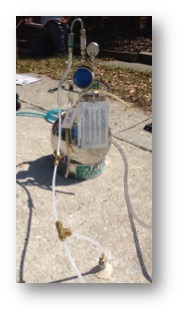
The VI data was evaluated to predict whether vapor intrusion beneath (or within) building structures located near impacted sites was a concern in Florida. Results of the various sampling events were evaluated to determine whether geotechnical properties of the soil, hydrocarbon concentrations in the soil, and dissolved hydrocarbons in the groundwater correlated with elevated hydrocarbon vapor concentrations in the vadose-zone soils and beneath building slabs. The sampling protocol was also evaluated to determine whether modifications should be implemented to improve the quality of the VI data.
Multiple factors can influence the potential indoor air concentration arising from vapor intrusion. Therefore, Earth Systems recommends collecting and evaluating multiple lines of evidence to characterize the vapor intrusion pathway and support risk management decisions.
